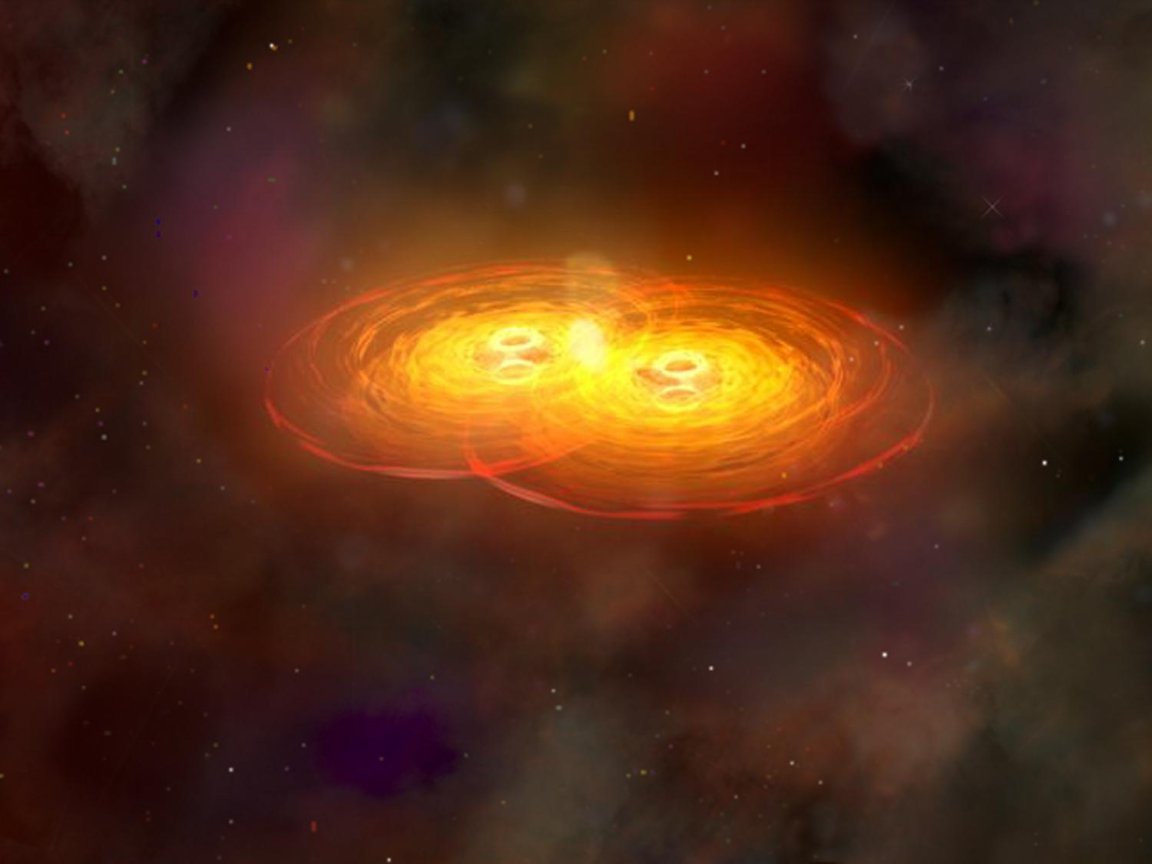
When Black Holes Collide
An object called PKS 1302-102 is one of the only known quasars that has black holes in its accretion disk. If you don’t know, an accretion disk is an amazingly hot halo of matter that surrounds, and is slowly being drawn into, a black hole. In short, it is where material goes before it is consumed by a black hole.
Recently, scientists announced that PKS 1302-102 has its two supermassive black holes set on a collision course.
When they finally collide, we will bear witness to a rather powerful explosion (honestly, “rather powerful” is quite the understatement). Caltech’s Matthew Graham describes the scale of the event to Phys.org, saying that “the result will be an enormous release of energy, roughly equivalent to millions of supernovae, in the form of gravitational waves.”
PKS 1302-102 is about to demonstrate what is called a “final parsec problem” (a process that has yet to be fully solved by theoretical models), which describes what happens when black holes merge and how long the process occurs. Researchers are now speculating that the collision could result in the ejection of the merged black hole from the galaxy—yes, the end result may very well be a rogue supermassive black hole hurtling through intergalactic space.
Making Gravitational Waves
Scientists calculate that the merger has already happened, as the quasar is approximately 3.5 billion light-years away from Earth. Ultimately, this means that we are seeing the objects as they were 3.5 billion years ago. Scientists calculate that the merger event likely happened some 3.39 billion years ago, so we still have some time before our observations of the event.
As it always the case, there is some degree of variability in the estimates. To that end, scientists will be on the lookout for signs of gravitational waves, the strongest source of which are binary black holes. “We have ongoing monitoring of this object, both photometrically and spectroscopically, and intend observations at other wavebands,” says Graham. And when the event does reach us, further studies into it could lead to a much greater understanding of these waves and what happens when black holes merge.